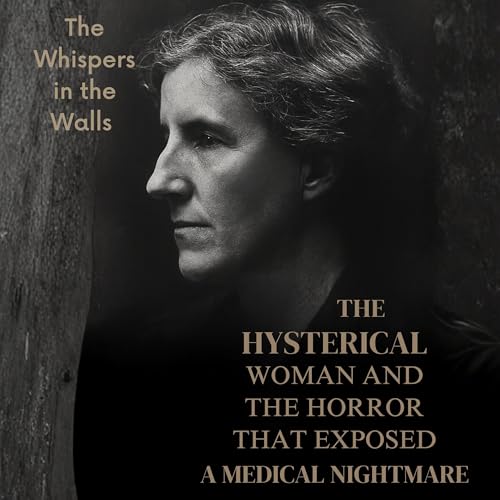
The Woman They Tried to Silence: Charlotte Perkins Gilman and the Horror That Exposed a Medical Nightmare
Failed to add items
Add to basket failed.
Add to Wish List failed.
Remove from Wish List failed.
Follow podcast failed
Unfollow podcast failed
-
Narrated by:
-
By:
About this listen
They called her hysterical.
They told her the cure was obedience, silence, stillness.
They insisted that the darkness swallowing her was proof she was weak, unstable, unfit for the very life she was living.
And when she tried to explain that the treatment was killing her, they dismissed her with a wave of the hand—because in 1887, a woman’s suffering was simply an inconvenience to be managed, not a truth to be believed.
This episode uncovers the brutal, breathtaking story of Charlotte Perkins Gilman, the writer who transformed her own medical imprisonment into one of the most terrifying—and important—stories in American literature.
Charlotte was drowning after the birth of her child—what we now recognize as severe postpartum depression. But the medical establishment had a different name for it: nervous prostration. A diagnosis designed to place the blame on women themselves. And the recommended solution? Dr. S. Weir Mitchell’s infamous rest cure: no books, no writing, no visitors, no creative thought. Just months of forced inactivity and silence until the patient was “restored” into submission.
The treatment nearly destroyed her.
The more she rested, the worse she became.
The cure was a cage, and the cage was driving her insane.
So she did the unthinkable: she walked away—from the doctor, from the “cure,” from the marriage that trapped her. And she picked up the one thing she’d been forbidden: a pen.
In 1892, she wrote “The Yellow Wallpaper,” a short story that detonated like a bomb in the polite rooms of American medicine. Through the eyes of a woman locked in a room under the guise of “care,” Charlotte revealed exactly how medical misogyny operated—how it isolated, silenced, controlled, and broke women under the guise of treatment.
The story was horrifying because it was true.
The creeping woman trapped behind the wallpaper wasn’t madness.She was metaphor.She was testimony.
She was every woman forced into domestic prison and called ungrateful for wanting out.
Doctors were furious.Libraries banned it.Critics called Charlotte dangerous.They were supposed to be outraged—because she had exposed a system built on dismissing women’s suffering while claiming to save them.
But she didn’t stop.
In 1898, she published “Women and Economics,” a groundbreaking argument that women’s oppression stemmed from their economic dependence on men. She insisted that domesticity wasn’t natural—it was enforced. That women deserved financial autonomy. That unpaid labor in the home was real work. These ideas were ridiculed then… and accepted as truth now.
She founded her own magazine, The Forerunner, writing nearly every word for seven years.
She wrote “Herland,” imagining a world where women built society without men’s violence or domination.
She toured the world lecturing on equality long before feminism had a name.
And through it all, the same people who’d dismissed her as hysterical continued to miss the point: Charlotte wasn’t fragile or unstable. She was furious, clear-eyed, brilliant—decades ahead of the society trying to contain her.
Even at the end of her life, she made her own choices. Diagnosed with terminal breast cancer in nineteen thirty-five, she wrote: “I have preferred chloroform to cancer.” Her final act of autonomy in a world that spent her entire life trying to claim ownership over her body.
Today, Charlotte Perkins Gilman’s legacy is everywhere:
in women’s right to work
to control their own money
to be believed about their own pain
to reject treatments that silence instead of heal
to break out of cages built by expectation and tradition.
“The Yellow Wallpaper,” once considered too disturbing for polite society, is now a cornerstone of American literature—a warning and a mirror.
Because the woman in the wallpaper is still with us.
Still clawing.
Still whispering.
Still showing us the bars we were taught not to see.
And Charlotte?
She’s the one who handed us the tools to tear them down.



